30 Notable Quotes By Francis Crick, The Great Molecular Biologist
Francis Harry Compton Crick was one of the greatest scientists. He is best known for his work with James Watson which led to the identification of the structure of DNA. Watson’s company was a great influence for Crick. Sharing the same passion and eagerness, they both were keen to find out the answer to the fundamental question of how genetic information could be stored in molecular form. Their finding helped them discover the helix structure of DNA. It was due to this discovery that Crick and James Watson along with Maurice Wilkins were jointly awarded ‘Nobble Prize in Physiology or Medicine’ in 1962. During his later years, Crick became interested in and focused to know how brain works. Crick was appreciated for his intelligence and his willingness to collaborate with other scientists. Being a renowned scientist, Crick shared his ideas and thoughts on several issues and subjects. Here is a compilation of Francis Crick’s famous quotes and sayings.

There is no scientific study more vital to man than the study of his own brain. Our entire view of the universe depends on it.

Christianity may be OK between consenting adults in private but should not be taught to young children.

We've discovered the secret of life.
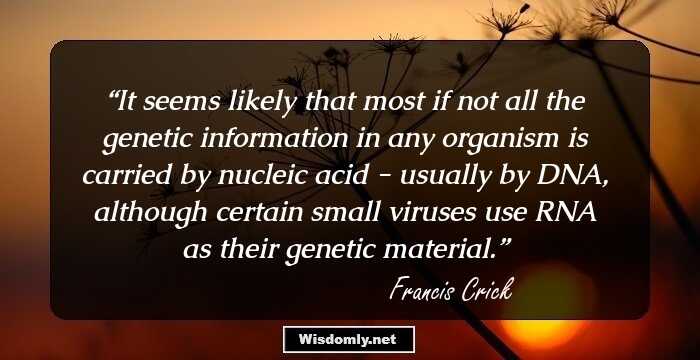
It seems likely that most if not all the genetic information in any organism is carried by nucleic acid - usually by DNA, although certain small viruses use RNA as their genetic material.

The dangerous man is the one who has only one idea, because then he'll fight and die for it." [As quoted in The New Yorker, April 25, 2011]

How do I know what I think until I hear what I say?
It is one of the more striking generalizations of biochemistry - which surprisingly is hardly ever mentioned in the biochemical textbooks - that the twenty amino acids and the four bases, are, with minor reservations, the same throughout Nature.
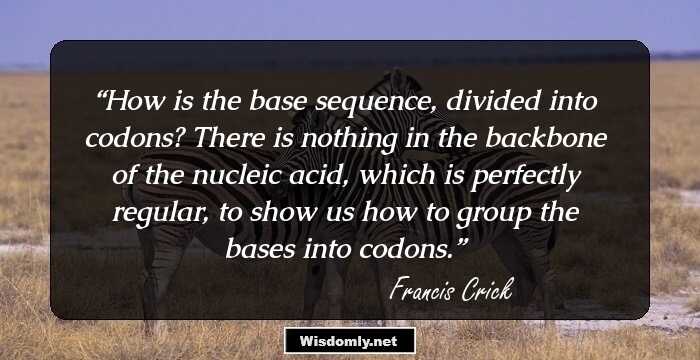
How is the base sequence, divided into codons? There is nothing in the backbone of the nucleic acid, which is perfectly regular, to show us how to group the bases into codons.
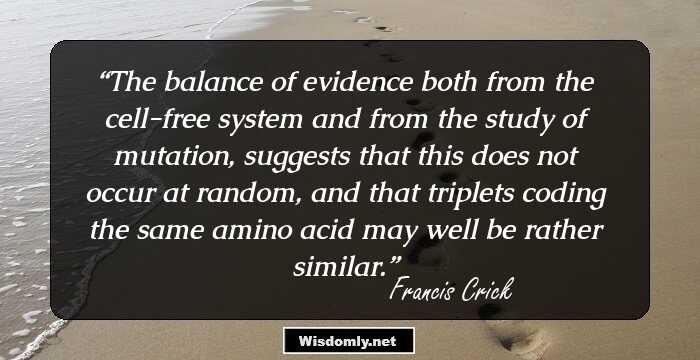
The balance of evidence both from the cell-free system and from the study of mutation, suggests that this does not occur at random, and that triplets coding the same amino acid may well be rather similar.
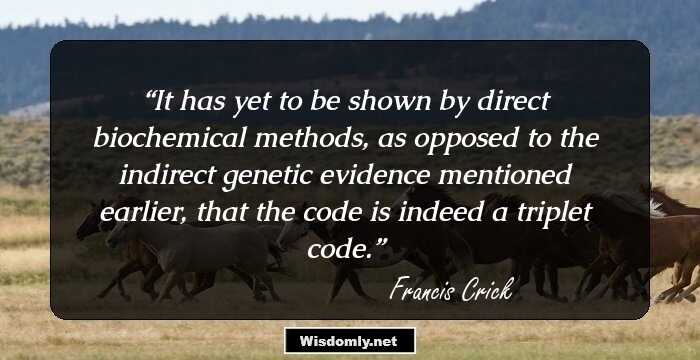
It has yet to be shown by direct biochemical methods, as opposed to the indirect genetic evidence mentioned earlier, that the code is indeed a triplet code.
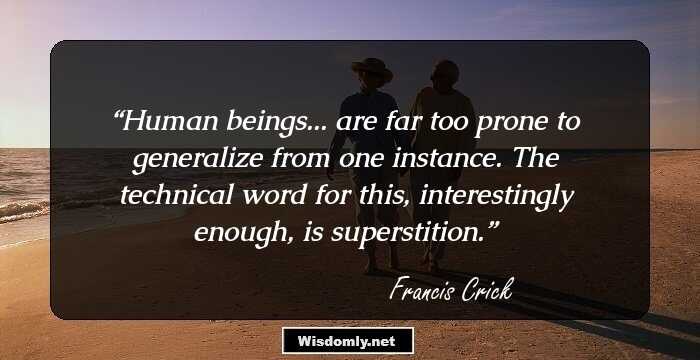
Human beings... are far too prone to generalize from one instance. The technical word for this, interestingly enough, is superstition.
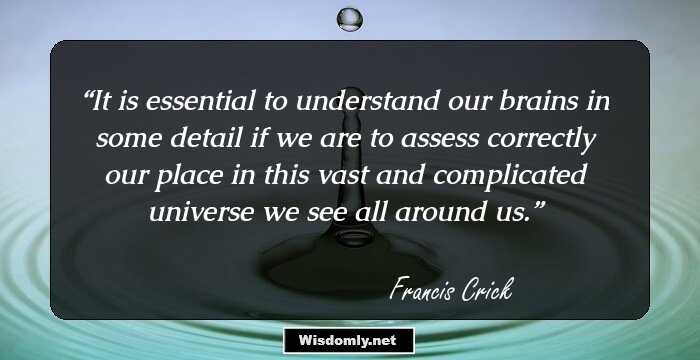
It is essential to understand our brains in some detail if we are to assess correctly our place in this vast and complicated universe we see all around us.
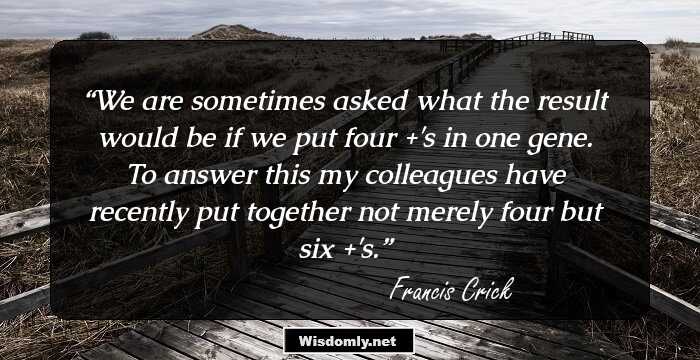
We are sometimes asked what the result would be if we put four +'s in one gene. To answer this my colleagues have recently put together not merely four but six +'s.
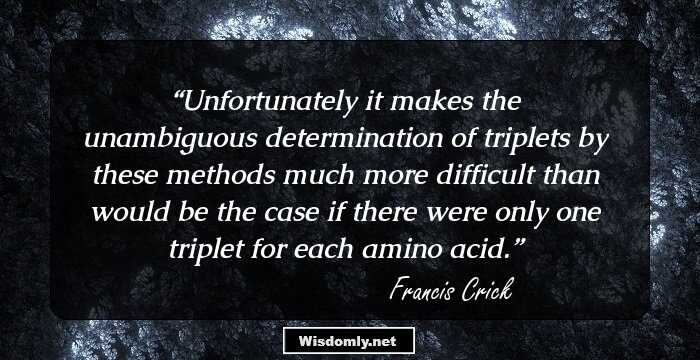
Unfortunately it makes the unambiguous determination of triplets by these methods much more difficult than would be the case if there were only one triplet for each amino acid.
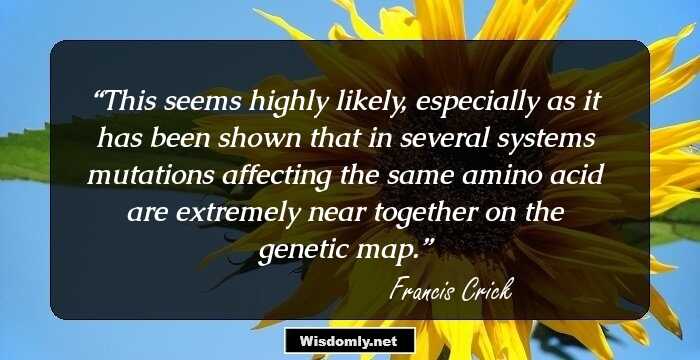
This seems highly likely, especially as it has been shown that in several systems mutations affecting the same amino acid are extremely near together on the genetic map.
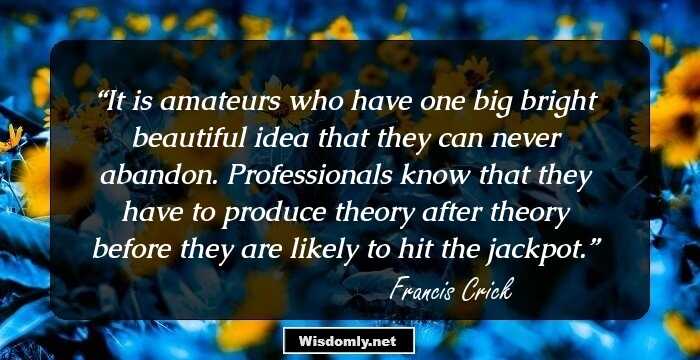
It is amateurs who have one big bright beautiful idea that they can never abandon. Professionals know that they have to produce theory after theory before they are likely to hit the jackpot.
The meaning of this observation is unclear, but it raises the unfortunate possibility of ambiguous triplets; that is, triplets which may code more than one amino acid. However one would certainly expect such triplets to be in a minority.
Moreover the incorporation requires the same components needed for protein synthesis, and is inhibited by the same inhibitors. Thus the system is most unlikely to be a complete artefact and is very probably closely related to genuine protein synthesis.
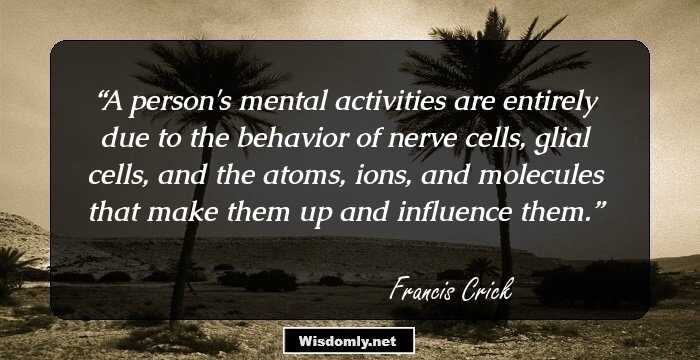
A person's mental activities are entirely due to the behavior of nerve cells, glial cells, and the atoms, ions, and molecules that make them up and influence them.
It would appear that the number of nonsense triplets is rather low, since we only occasionally come across them. However this conclusion is less secure than our other deductions about the general nature of the genetic code.

A comparison between the triplets tentatively deduced by these methods with the changes in amino acid sequence produced by mutation shows a fair measure of agreement.
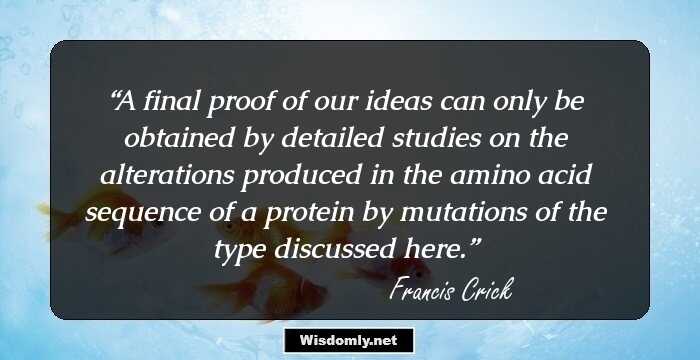
A final proof of our ideas can only be obtained by detailed studies on the alterations produced in the amino acid sequence of a protein by mutations of the type discussed here.
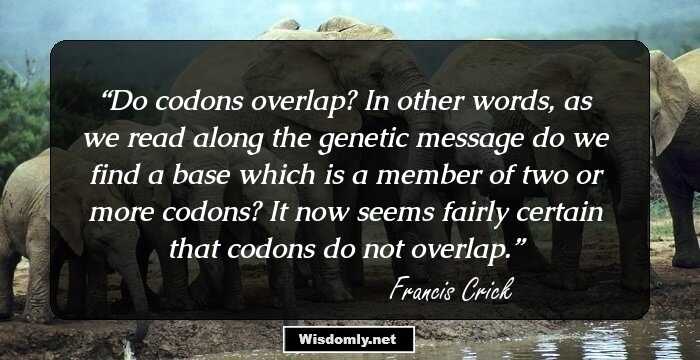
Do codons overlap? In other words, as we read along the genetic message do we find a base which is a member of two or more codons? It now seems fairly certain that codons do not overlap.

For simplicity one can think of the + class as having one extra base at some point or other in the genetic message and the - class as having one too few.
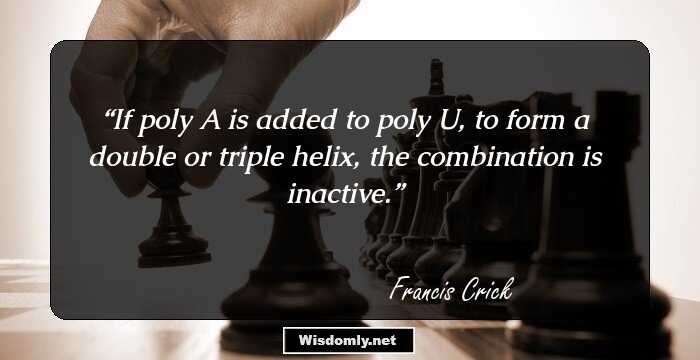
If poly A is added to poly U, to form a double or triple helix, the combination is inactive.

If the code does indeed have some logical foundation then it is legitimate to consider all the evidence, both good and bad, in any attempt to deduce it.

It now seems certain that the amino acid sequence of any protein is determined by the sequence of bases in some region of a particular nucleic acid molecule.
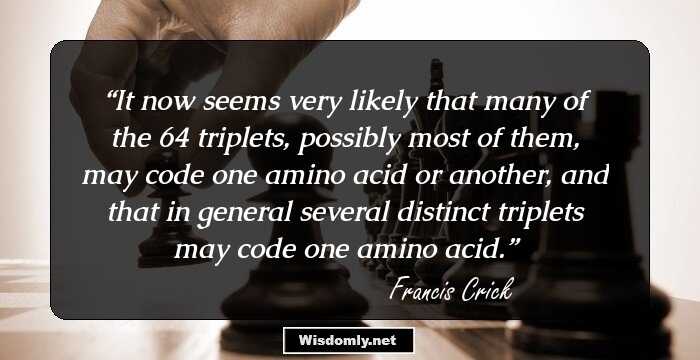
It now seems very likely that many of the 64 triplets, possibly most of them, may code one amino acid or another, and that in general several distinct triplets may code one amino acid.
If, for example, all the codons are triplets, then in addition to the correct reading of the message, there are two incorrect readings which we shall obtain if we do not start the grouping into sets of three at the right place.
Attempts have been made from a study of the changes produced by mutation to obtain the relative order of the bases within various triplets, but my own view is that these are premature until there is more extensive and more reliable data on the composition of the triplets.










